Cuningham’s Work Studio maps out four scenarios to help organizations reimagine how their workplaces might evolve as the future of office unfolds.
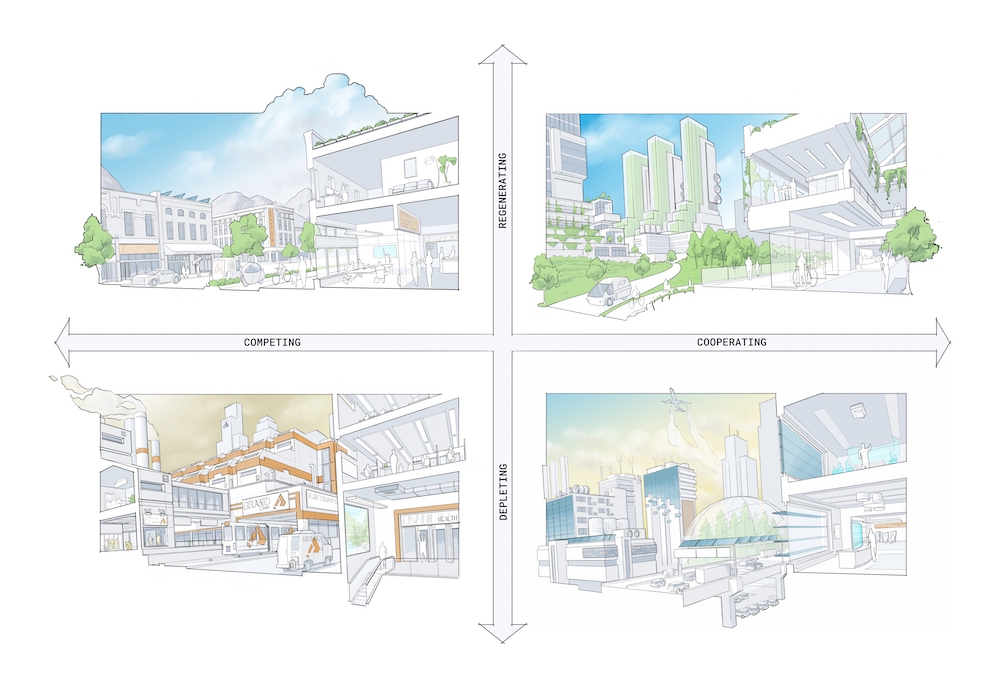
The COVID-19 pandemic has changed offices as we know them and has forced companies to adopt new ways of working. The last two-plus years raised many questions as organizations began to reimagine their operations and the role of office space in creating safe, productive, and pleasant work environments for employees.
While the global pandemic sparked a lot of uncertainty surrounding the office sector, many were focused on short-term predictions rather than long-term solutions. Striving to bypass the typical “post-COVID” design discussions, we set out to answer the question:
“How can we design a meaningful and equitable work experience beyond the physical space and beyond COVID?”
Regardless of the pandemic, the key to creating a successful work environment in both the short and long term is to be proactive rather than reactive. So, what might daily work life look like in the future? As we proactively envision how people will interact with their jobs and career ambitions, we can reveal how workspaces of the future could be utilized, and what they might look and feel like.
In our recent discussions surrounding future workplace designs, we used the exercise of scenario planning. This is a disciplined method for imagining possible futures and then generating flexible, long-term plans based on those concepts. Through this exercise, we identified critical uncertainties and variables in the world, as well as the driving forces that will create change over time.
We mapped out four potential scenarios to help organizations reimagine how their workplaces might evolve as the future of office unfolds. From these scenarios, described below, we’ve compiled several strategies to help guide future-focused thinking when it comes to workplace design. By urging stakeholders to take this approach, we can be more confident that short-term decisions, initiatives, and investments will create flexibility rather than limit their options later.
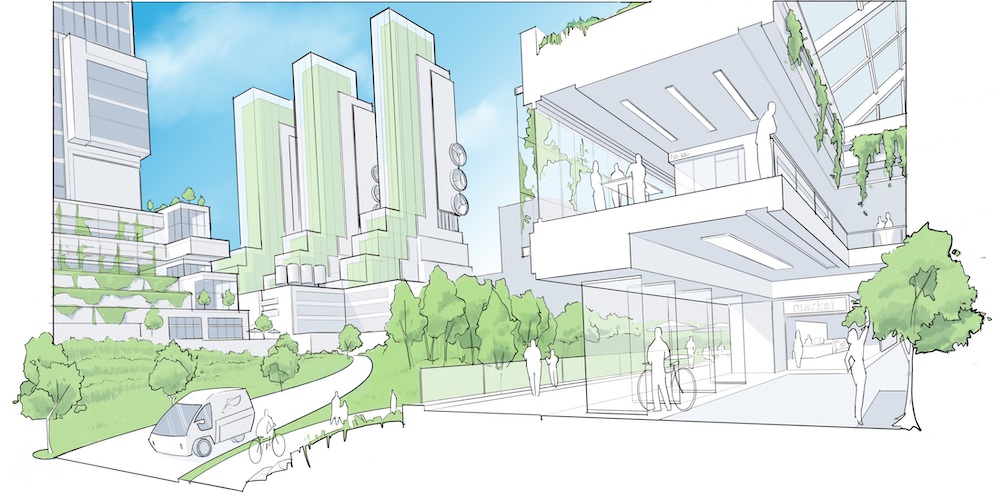
Don’t be Afraid to Think Decades Ahead
Over the next few years, workplaces will be designed and developed to ideally serve the business community for several decades to come.
While COVID has made health, safety, and wellness in the workplace a critical consideration, business leaders, developers, and designers must take a step back and look beyond the pandemic. They must resist investment in reactionary features that could be irrelevant in a few years.
Instead, forward-looking designers and other stakeholders are looking at how decisions about workplace environments made now will be increasingly compatible and adaptable to changes down the line.
While utilizing the scenario planning method, the concept of two axes based on current societal and environmental trends arose from our discussions. These two concepts consist of Cooperating/Competing and Regenerating/Depleting.
The Cooperating/Competing axis looks at the likelihood of our institutions and society working together for the common good, while the Regenerating/Depleting axis asks whether we will work to restore our environment and resources or continue to exhaust them. By crossing these two vectors, we created a matrix of four unique scenarios to explore.
The below four potential scenarios for what daily life might look like a few decades into the future are based on current trends, research, and projections in several areas –including the response to climate change and use of resources, government regulations, corporate strategies, and how they intersect:
- A Climate-First Society (Cooperating + Regenerating): This scenario envisions that humanity puts aside its differences to focus on repairing Earth’s climate. We would see an increasing blend of the urban fabric with natural world elements and a rise in both co-op working and housing.
- An Engineered Future (Cooperating + Depleting): This is what could happen if society makes few changes to current resource usage but works together to lessen the negative effects on humanity. Adaptive reuse and technology have facilitated flexibility and fluidity in where and how people work – with mounting utility bills. This future is defined by energy insecurity, temporary solutions to climate change, and adaptive reuse within the built environment.
- A Competitive Advantage (Competing + Regenerating): If states implement stricter environmental requirements but ultimately leave companies to compete for both material and human resources, this is how the future could look. Large corporations will have scattered and split into smaller, more nimble companies to better adapt to changing regulations. This environment leads to many contract employees, who work from home and from flexible, well-appointed “hubs” as needed.
- A Company Town (Competing + Depleting): This scenario anticipates a future where, as resources dwindle and prices rise, aligning with large corporations is increasingly the only route to access modern technology. Growing investment in filtering and cycling air efficiently and steeling office buildings’ exteriors to the abrasive dust and security threats of the outside world would be in store.
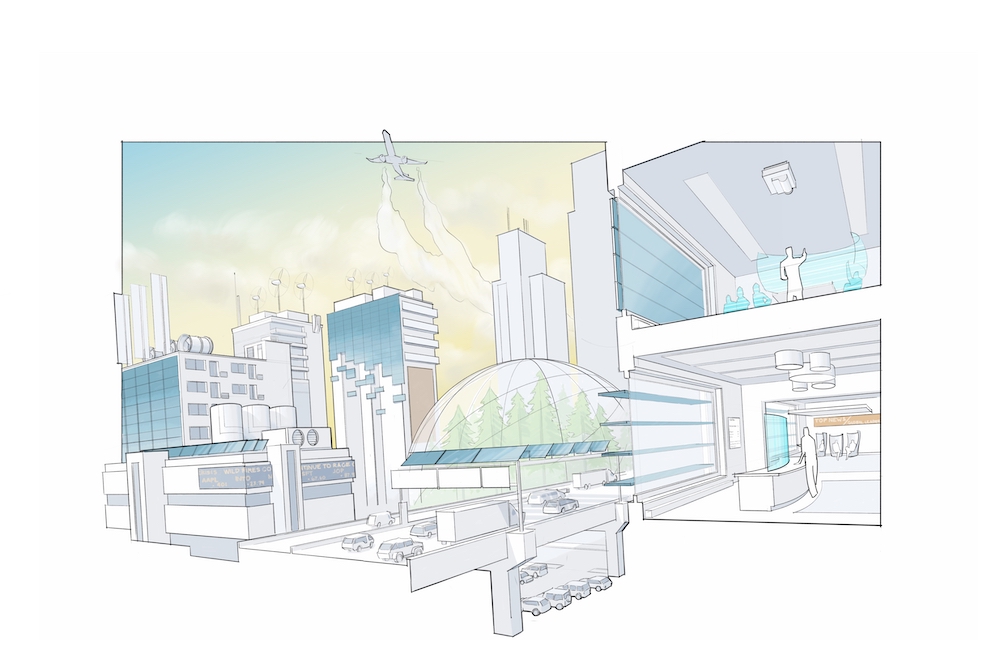
Identify Overarching Trends
After building out and evaluating these scenarios, we looked at common trends across these potential futures in order to prepare for the likeliest outcomes. Identifying these trends helps reveal which aspects are the most beneficial to research and how that can help business owners, real estate developers, and other workplace stakeholders – no matter which one of these futures unfolds.
Below are some of the trends that emerged from the four scenarios:
Circular Economy and Regenerative Design Principles Will be Key:
We will see increased emphasis on demountable and reusable design, cradle-to-cradle materials sourcing, and buildings that not only respond to but also help to enhance the local context and ecology.
Provide a Sense of Company Culture and Belonging That Goes Beyond Physical Space:
Workplace designs will be able to play a role in ensuring equity across platforms – all employees feel they are an equal part of a company, no matter where, when, or how they choose to work.
Moreover, the potential talent pool for any company will expand far beyond geographic boundaries, and thus recruiting, retention, and a talent network will become even more important than it is today. The office can become a space focused on what can uniquely be accomplished in a physical environment – collaboration, client interaction, hosting events, and engagement with brand and culture.
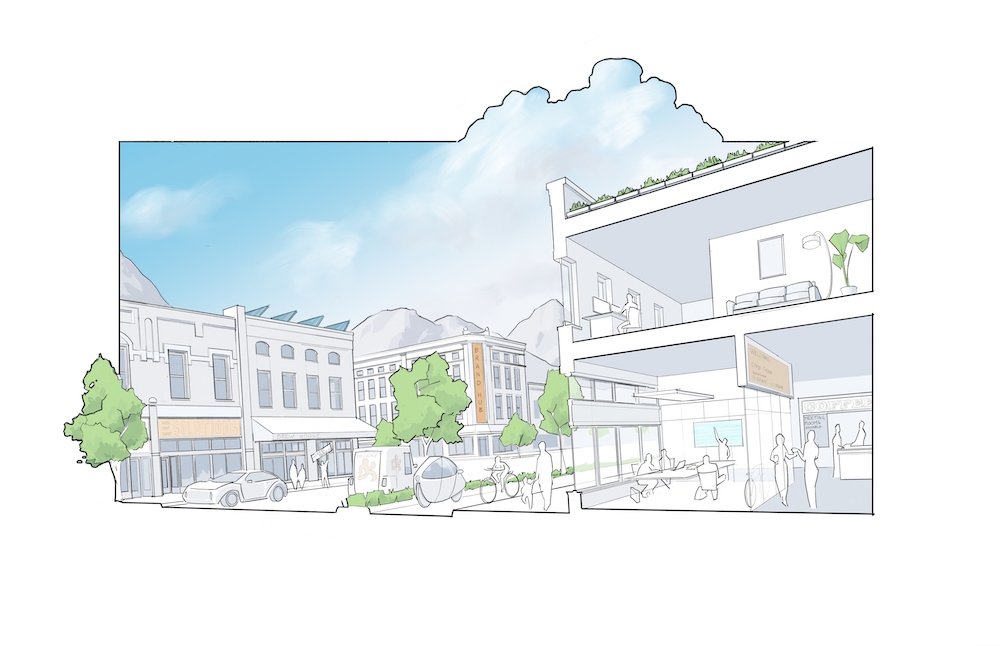
We Aren’t Working From Anywhere, We Are Working From “Anythere”
Companies are continuing to recognize the benefits of flexible workflows allowing employees to work where and when they want. Designing for “third spaces” between office and home will be as important as designing the office.
We anticipate that third spaces will expand beyond co-working hubs, coffee shops and community centers, evolving with a more geographically distributed workforce, the reduction of company’s physical real estate assets, and a wider embrace of Circular Economy principles. In some form or another, companies will go to where their employees are rather than the reverse.
A Shift to Project-Based Work, Rather than Company-Based Employment:
Traditional models of work have prioritized long-term loyalty to company, as well as stability of location and compensation. As work location becomes more distributed, work will be brought to wherever the best talent resides, not vice versa.
In a distributed work model, there will be greater reliance on a company’s brand and cultural values serving as the glue that holds the networked organizations, full-time employees, and contract workers together.
Adaptive Reuse Will Increasingly Supplant New Construction:
As virgin materials become more valuable and increasingly scarce, adaptive reuse of distressed assets in existing structures will become progressively viable and even necessary. The best designs will be the ones that use existing fabric to maintain and strengthen connections to the surrounding community.
The most effective and valuable projects will seek to maximize the utilization of real estate and materials by integrating multiple uses and users. Any new construction projects will be expected to anticipate the potential of adaptive reuse and recovery of materials in the future.
Health, Safety, and Wellness Will Come to the Forefront:
As the workforce continues to return to the office in the upcoming months, healthy office management and associated data-tracking and communication will be paramount for conducting a smooth, safe, and equitable transition.
While social distancing and enhanced cleaning protocols, and the ability to pivot as needed, will continue to be top of mind, our focus will shift heavily to supporting employees’ mental and physical health beyond COVID and providing easy access to associated benefits and amenities.
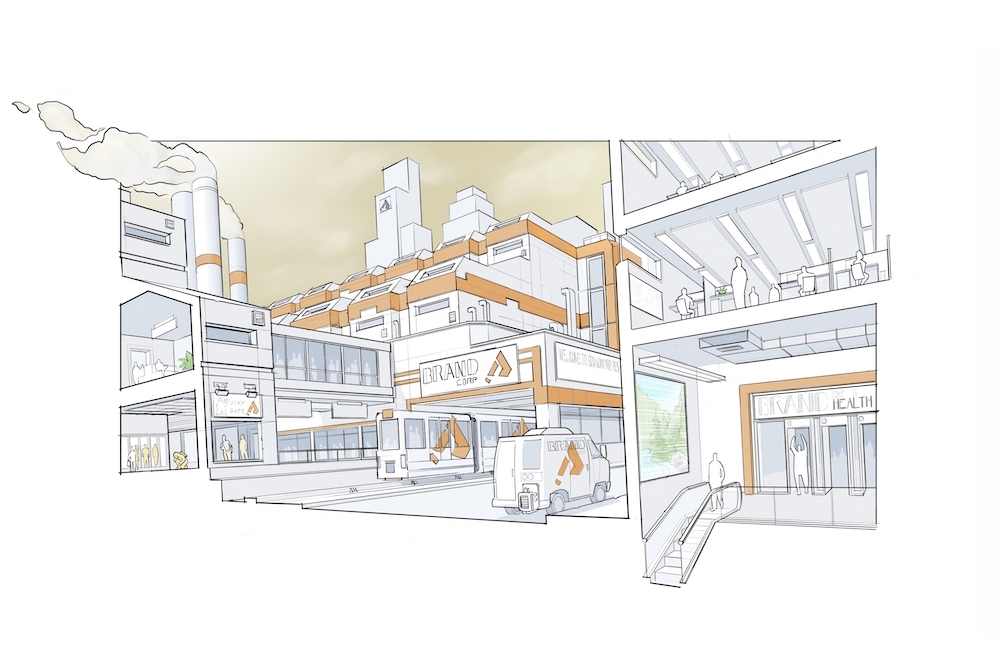
Ask the Right Questions
Asking effective questions now will help business leaders and other stakeholders be better equipped to determine and adapt as needed to suit the future of work. From the future scenarios and trends outlined, we formulated the following:
What are your enterprise’s sustainability commitments?
- Does your enterprise have a Climate Action Plan for business resilience?
- Are you measuring your business activities on Environmental, Social & Governance (ESG) criteria?
- Has your leadership declared its 2030 commitments to reduce emissions?
- Do you have initiatives that engage your stakeholders and communities as partners?
- Are you quantifying the material flows and utilization of assets throughout your property portfolio?
Is your enterprise’s IT platform being reengineered to support a distributed work model? Why not?
- Does your platform allow for mobility?
- Are you utilizing technologies that facilitate working seamlessly across real and virtual places?
What is your workforce talent strategy?
- Are you measuring your business activities on Diversity, Equity and Inclusion (DEI) criteria?
- What work locations will best provide access to this talent pool of employees and contractors?
- Will flexible work practices allow talent to work from “anythere” in a hybrid workplace model?
- How are your brand values expressed in creating an employee work experience?
Are you quantifying the material flows and utilization of assets throughout your property portfolio?
- Are you implementing circularity through elimination of waste and pollution, recovery of used materials, and restoration of ecosystem services?
- Are you effectively repositioning distressed and stranded assets, dispositioning surplus space and capacity, and reconfiguring space for new purposes?
Does your organization actively support your talent’s health and wellbeing?
- Does your workplace strategy align with your health and wellness program?
- Do your workplace practices and protocols address employees’ heightened concerns about their own personal safety?
- Are you incorporating evidence-based design factors such as biophilia to enhance physical, emotional, and mental health?
No one has a crystal ball. That said, as vaccinations and boosters continue to roll out, workplaces re-open, and we consider what comes next, stakeholders must ensure they are positioned to respond and adapt to what the future holds, whatever that may be.
This is why we urge business owners and leaders, developers, fellow designers, and others to remain diligent – through not shying away from innovative thinking and research, staying abreast of trends, and consistently considering how to best serve business and employee needs across physical and virtual workspaces. We also encourage them to be deliberate about what variables are most important to their culture and identity.
By remaining proactive rather than reactive, the choices companies make now will position them to be adaptable and successful in the future.

